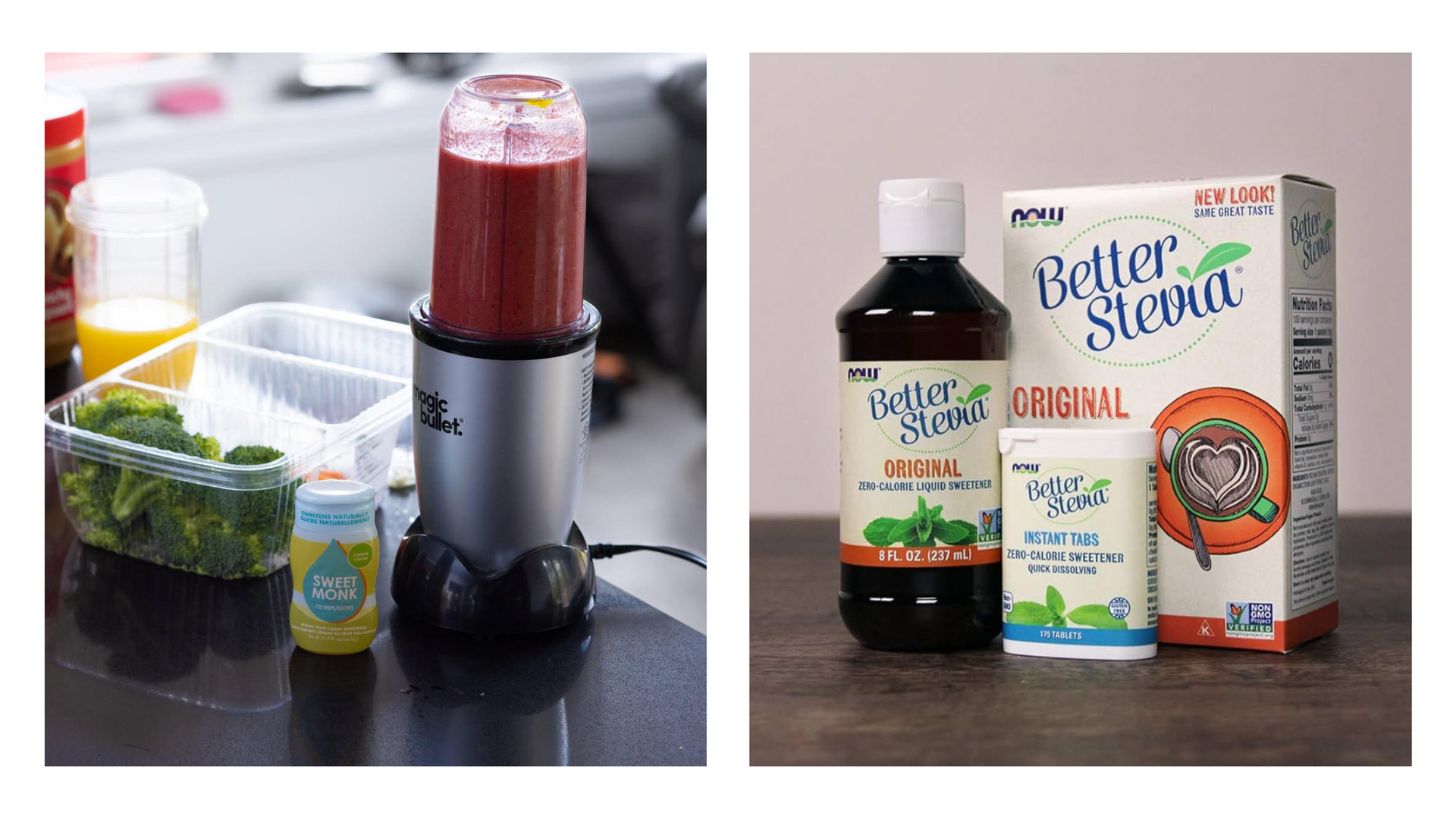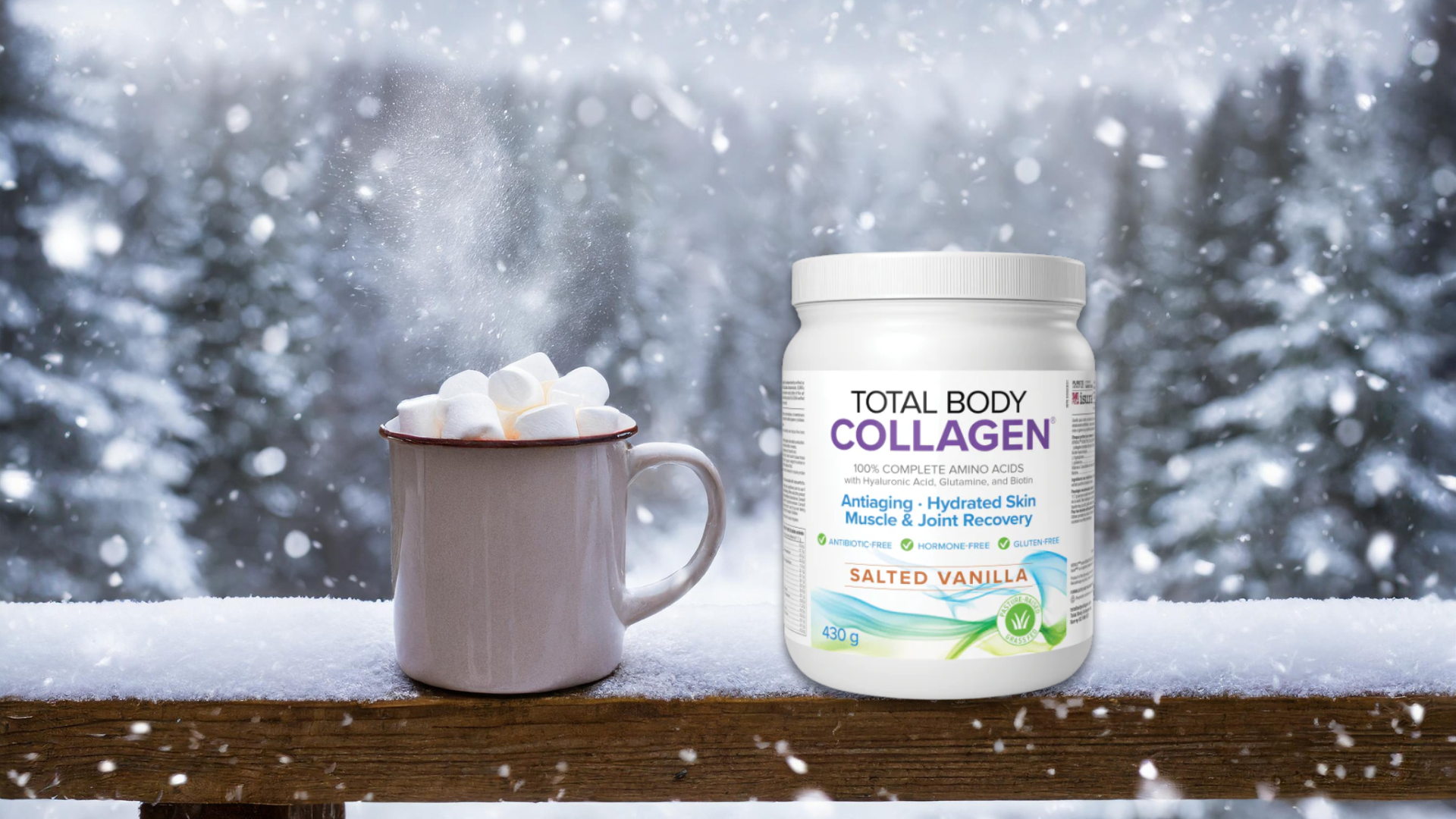With so many sugars and sweeteners on the market today, choosing the 'right one' can feel overwhelming.
From truly natural sweeteners like honey and maple syrup to sugar alcohols and zero-calorie artificial sweeteners (aspartame being the
big
one), the options on shelves today are seemingly endless - but some come with serious health risks and drawbacks. Whether you're managing your blood sugar, trying to cut down on sugar intake, or simply just want to better understand what you're putting in your body - we're here to help!
A high sugar intake is not healthy for our bodies, but let's face it - it is very difficult to cut out sugar entirely. And as studies emerge on the effects of sugar substitutes, we are better understanding the risks associated with many of them. So, when you're looking for a bit of sweet whether its in your coffee or you're reading the ingredients list on a product in the grocery store it is best to be informed.
In this post, we'll break down the pros and cons of each category - and some of the most popular kinds in each - so you can make more educated choices and find what's best for you.
Also be sure to check out our Wellness Wisdom video on this topic with our Lindsay Store Manager and Nutritionist, Rebecca Kerrivan!
*The Glycemic Index is a measure of how quickly blood glucose levels are likely to rise after eating a particular food. It is commonly used by diabetics to help manage blood sugar levels. Foods with a low score (1-55) spike sugar slowly, while a high GI score (70+) spikes blood sugar quickly. We offer it here as a resource if blood sugar levels are of concern to you, however, sweeteners/sugar with low GI are not necessarily 'good' and vice versa because other factors are involved.
*Glycemic Load
gives you a more accurate picture of a food's real-life impact on your blood sugar by taking carbohydrates into account. To understand a food's overall impact on blood sugar, you need to know how quickly it makes glucose enter the bloodstream AND how much glucose per serving it delivers - which is what Glycemic Load does.
For example, Watermelon has a high glycemic index (80). But a serving of watermelon has so little carbohydrate that its glycemic load is only 5-8. If you went just by Glycemic Index, you might think watermelon wasn't a healthy choice, but Glycemic Load helps us understand that because it is low in carbohydrates, it will only slightly impact a person's blood glucose after consuming it.
When choosing a sugar, sugar alternative, or sweetener we always recommend using Certified Organic and Non-GMO wherever possible as this ensures the highest processing standards and lowers your risk of exposure to pesticides and other harsh chemicals.
Natural Sugars
Honey
- Unpasteurized, Raw, Manuka
Glycemic Index Rating: 59-61
Glycemic Load Rating: 10
- All-natural
- Available from local farms and apiaries - support local!
- High in nutrients including anioxidants, prebiotics, calcium, magnesium, manganese, niacin, phosphorus, zinc, riboflavin, potassium, and propolis
- Manuka honey specifically has high levels of methylglyoxal which has anti-bacterial properties
Calories per tablespoon: 64
Maple Syrup
- 100% pure, no additives
Glycemic Index Rating: 54
Glycemic Load Rating: 36.9
- All-natural
- Available from local farms
- Contains many trace minerals including zinc, manganese, calcium, potassium, and magnesium
- Packed with up to 24 different antioxidants to help fight free radicals and inflammation
Calories per tablespoon: 52
Blue Agave
Syrup/Nectar - 100% pure, no additives, fair trade
Glycemic Index Rating: 15
Glycemic Load Rating: 11
- All-natural
- Ensure your agave is
Fair-Trade.
Calories per tablespoon: 60
Dates -
100% pure, no additives
Glycemic Index Rating: 31-60
Glycemic Load Rating: 8.5-24
- All-natural
- Glycemic rating depend on the variety of date
- Dates
are very nutritious with protein, potassium, magnesium, copper, manganese, vitamin B6, and iron
- High in antioxidants and fiber
Calories per tablespoon: 33
Natural Sugar Alternatives
Monk Fruit Sweeteners
Monk fruit sweetener is created by removing the seeds and skin of the fruit and crushing it to collect the juice. Some monk fruit sweeteners (Like SweetMonk) are 100% pure, while others have additives or alcohols.
Glycemic Index Rating: 0
Glycemic Load Rating: 0
- All-natural (if pure)
- Available in liquid and powder/sugar
- 100-250x sweeter than table sugar
- Does not impact blood sugar levels, making it a popular option among diabetics
- May have anti-inflammatory properties
- Generally considered safe
Calories per tablespoon: 0
Stevia
Stevia sweeteners are made by extracting steviol glycosides from the leaves of the stevia plant and purifying them to remove some of the bitter attributes found in the crude extract. While some stevia products are pure, others contain sugar alcohols.
Glycemic Index Rating: 0
Glycemic Load Rating: 0
- All-natural (if pure)
- 200-350x sweeter than table sugar
- Available in liquid and powder
- Does not impact blood sugar levels, making it a popular option among diabetics
- Generally considered a safe alternative, though some studies suggest interruption of beneficial gut bacteria
- Some people do not like the taste/aftertaste of stevia
Calories per tablespoon: 0
Sugar Alcohols
Sugar alcohols are a controversial topic in the world of sweeteners.
What are they? Sugar alcohols are carbohydrates that occur naturally in foods like fruits and vegetables. However, the sugar alcohols sold on the market as 'sugar alternatives / sweeteners' are produced industrially. They are often used as sugar alternatives because they are lower in calories.
Erythritol
Erythritol is primarily produced through a fermentation process using yeast derived from corn or wheat starch.
Glycemic Index Rating: 0
Glycemic Load Rating: 0
- 60-70% as sweet as table sugar
- Does not impact blood sugar levels, making it a popular option among diabetics
- Generally considered safe, though some studies suggest higher levels of erythritol in the blood are associated with an increased risk of cardiovascular events
- Some people do not like the aftertaste of erythritol
Calories per tablespoon: 5
Xylitol
Xylitol is made through a process involving hydrogenation of xylose, a sugar, which is extracted from plant sources like birch bark or corn cobs. This process converts the xylose into xylitol.
Glycemic Index Rating: 7
- All-natural (if pure)
- About the same sweetness as table sugar
- Generally considered a safe alternative, though higher levels of xylitol in the blood are associated with an increased risk of cardiovascular events like heart attack and stroke in some studies
Calories per tablespoon: 24
Artificial Sweeteners
Another controversial topic is artificial sweeteners. Products like Sweet N Low and Splenda have risen to the top as zero-calorie sugar alternatives, but their impact on health has come into question.
These products are typically made of
- Acesulfame potassium (Sweet One, Sunett)
- Advantame
- Aspartame (NutraSweet, Equal)
- Neotame (Newtame)
- Saccharin (Sweet'N Low)
- Sucralose (Splenda)
And while generally considered safe by the FDA and Health Canada, other organizations and scientific studies call for consumers to be wary of artificial sweeteners due to potential health risks - so this is something to be aware of.
Aspartame
is considered a possible carcinogen by the WHO and the International Agency for Research on Cancer (IARC). Other studies suggest negative effects of aspartame on cognitive function.
Saccharin
has been studied for a potential link to cancer, though others find it to be safe.
In the end, understanding the different types of sugars, natural sweeteners, and sugar alternatives empowers us to make more informed choices for our health. Whether you prefer honey over stevia, or reach for coconut sugar instead of white sugar, the key is balance. No one option is perfect for every person or every situation—and that’s okay. Embracing the principle of “everything in moderation” allows you to enjoy a variety of sweeteners without overloading your system or feeling deprived. It’s not about cutting sugar out entirely, but about being mindful of what you’re choosing, how much, and why.














